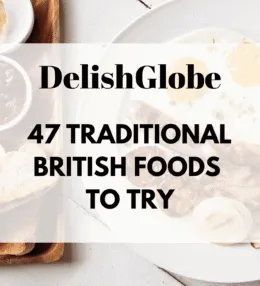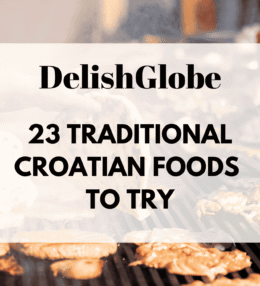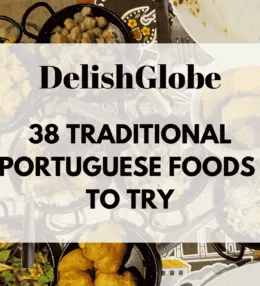Serbian cuisine does not shout for attention. It draws you in slowly, one comforting bite at a time. It is food that feels familiar even when you are tasting it for the first time. Rich, bold, and steeped in tradition, each dish carries the warmth of home cooking and the spirit of a country shaped by its geography, seasons, and layered history.
What sets Serbian food apart is its unfiltered love for deep, honest flavour. Smoky grilled meats, slow simmered stews and flaky pastries come together in a way that is both rustic and balanced. You will catch hints of the Balkans, the Ottomans, and Central Europe, yet everything remains distinctly Serbian. It is generous food. Grounded. Real.
In this guide, you will find traditional Serbian dishes that offer more than just a taste of local cuisine. Each one reflects a piece of the culture, from everyday comfort foods to festive favourites. Whether you are dipping into kajmak or biting into a plum stuffed dumpling, you are stepping into a culinary tradition that speaks with quiet confidence and lasting flavour.
Pljeskavica (Meat Patty)
Pljeskavica is a dish that captures the heart of Serbian grilling culture. This large, seasoned meat patty is usually cooked over an open flame, giving it a smoky depth and a texture that is both juicy and slightly crisp at the edges.Often compared to a burger, it stands apart in its size, seasoning, and serving style. In Serbia, pljeskavica is a street food favourite, sold in bakeries, restaurants, and open-air stalls where the aroma of grilling fills the air.It is more than a quick meal. Pljeskavica has become part of everyday dining, a food that satisfies both casual cravings and festive occasions. Whether eaten on its own or tucked into bread with sides, it always feels substantial. Get The Recipe Gibanica (cheese pie)
Gibanica is a beloved Serbian dish that carries both comfort and celebration in its layers. Made with phyllo pastry, cheese, and eggs, it is baked until golden and crisp on the outside while remaining soft and savoury within. It is simple in form yet generous in flavour.Across Serbia, gibanica appears at family gatherings, religious holidays, and casual everyday meals. Its appeal lies in its versatility. It can be served warm or cold, as a main dish, a side, or even a snack shared among friends.The pie holds a character that is rustic yet satisfying. Every bite offers a balance of crunchy pastry and creamy filling, creating a dish that feels hearty without being heavy. It is food that invites people to linger at the table. Get The Recipe Mućkalica (Spicy Meat Stew)
Mućkalica is a dish that feels both rustic and inventive, born out of resourcefulness and a love of hearty flavours. It is a Serbian stew where grilled meat finds new life, simmered with vegetables and spices until everything melds into a warming whole.The name itself comes from the verb meaning to stir or mix, and that spirit of combining ingredients is at the heart of the dish. It is less about rigid rules and more about turning what is available into something deeply satisfying.Often served with bread or polenta, Mućkalica is the kind of dish that brings people to the table on cold evenings. Its appeal lies in the contrast between smoky grilled meat and the lively sauce it cooks in. Get The Recipe Punjena Paprika (Stuffed Bell Peppers)
Punjena Paprika is a Serbian dish that captures the essence of home cooking. Bell peppers are hollowed, filled with a savoury mix of meat and rice, and simmered gently in a tomato-based sauce until they soften and soak up flavour.It is a meal that feels hearty yet balanced, with peppers bringing freshness and rice adding comfort. Families often prepare it in large pots, filling kitchens with an aroma that signals warmth and togetherness.What makes it memorable is the way each element works in harmony. The peppers mellow as they cook, the filling binds together, and the sauce unites it all. It is satisfying, nourishing, and deeply tied to tradition. Get The Recipe Prebranac (Baked White Beans)
Prebranac, a simple preparation of white beans baked slowly with onions and paprika until the flavours deepen into something both hearty and soulful. It is food that feels grounding, especially during colder seasons.Often found at family tables, village gatherings, and religious observances, Prebranac represents much more than sustenance. It is a dish that warms, nourishes, and connects people, whether served as a side at festive feasts or as the centre of a humble meal.The appeal lies in its unpretentiousness. No elaborate steps are required, yet the end result carries remarkable depth. Time, patience, and quality ingredients turn beans and onions into a dish layered with history and comfort. Get The Recipe Karađorđeva Šnicla (Stuffed Breaded Cutlet)
Karađorđeva Šnicla is a Serbian classic that combines crisp breading with a rich filling hidden inside tender meat. It is a dish that feels indulgent yet rooted in tradition, offering layers of flavour and texture in every serving.The cutlet is rolled around a creamy centre, breaded, and fried until golden. Served with potatoes, tartar sauce, or vegetables, it makes a plate that feels both hearty and celebratory, a balance between homely comfort and festive dining.Its appeal lies in the contrast it creates. Crisp coating meets soft meat and creamy filling, a trio that makes each bite memorable. It is food designed to satisfy appetite while also carrying cultural pride. Get The Recipe Ajvar (Roasted Red Pepper Spread)
Ajvar is a Serbian spread that has earned a place at tables across the Balkans. Made primarily from roasted red peppers, it is smooth, vibrant, and packed with flavour. Whether eaten with bread, meat, or cheese, it offers warmth and comfort in every spoonful.It is often prepared in large batches at the end of summer when peppers are in abundance. Families gather to roast, peel, and stir the mixture, turning a seasonal ritual into both a labour of love and a way to preserve the harvest.Though humble in appearance, Ajvar carries layers of taste that feel both familiar and distinctive. Its appeal lies in the way it can be served as a simple spread or as part of a larger meal, always bringing depth and richness. Get The Recipe Česnica (Christmas Bread)
Česnica is a bread baked for Christmas Day in Serbia, prepared with care and shared at the family table. It is far more than food, for each loaf carries symbols of prosperity, unity, and tradition. Every slice is linked with hopes for the year to come.The bread is round and often decorated with patterns shaped by hand, making each version unique. Families break it together before the meal, turning the simple act of sharing into something ceremonial and meaningful.It is a dish that is both humble and sacred. While the ingredients are basic, the rituals surrounding it transform the bread into a centrepiece that ties family, faith, and heritage together in one gesture. Get The Recipe Salčići (Layered Pastries)
Salčići are traditional Serbian pastries that bring comfort and nostalgia to many households. They are small, layered, and often dusted with sugar, offering a delicate bite that is both flaky and rich. Simple in appearance, yet they carry remarkable depth of flavour.These pastries are usually prepared during colder months, when gatherings and family celebrations call for something warm from the oven. They are often placed on holiday tables, their golden layers tempting guests with their light sweetness.Part of their charm is their balance between richness and subtlety. Salčići are not overly sweet or heavy, which makes them easy to enjoy in generous amounts. Each piece feels homely, yet refined enough to sit proudly at festive occasions. Get The Recipe Komplet Lepinja (Gravy Filled Flatbread)
Komplet Lepinja is essentially a Serbian flatbread transformed into a meal. The bread is sliced open and filled with a mixture of gravy made from roasted meat drippings, a lightly baked egg, and kajmak, a local clotted cream.The bread itself is soft but sturdy, designed to hold the filling without collapsing. Once assembled, it is warmed again, allowing the ingredients to fuse together and soak into the crumb, creating a dish that feels both rustic and decadent.It is usually served on its own, needing no accompaniments. Though simple in construction, it carries boldness in flavour and texture, making it a favourite among those who prefer food that speaks with richness rather than restraint. Get The Recipe Krofne (Jam Filled Doughnuts)
Krofne are soft, pillowy doughnuts that bring a touch of sweetness to Serbian kitchens. They are fried until golden, filled with jam, and often dusted with icing sugar. Their charm lies in the contrast between the airy dough and the sweet filling inside.Served at family gatherings, holidays, or simply on a quiet afternoon, Krofne have long been a symbol of warmth and togetherness. They carry a sense of familiarity, reminding many of home baking shared across generations.Although similar to doughnuts found elsewhere, Krofne have their own rhythm. They are made patiently, allowed to rise fully, and fried gently until light and tender. This care is what gives them their characteristic fluffiness. Get The Recipe Vanilice (Jam Sandwich Cookies)
Vanilice are small Serbian cookies that bring sweetness and comfort to festive tables. They look delicate, but beneath the light dusting of sugar lies a tender biscuit filled with jam that has been made and shared for generations.These cookies often appear at Christmas and family gatherings, served on trays alongside coffee or rakija. Their size makes them easy to enjoy in a single bite, yet their flavour lingers long after, rich with tradition and homely warmth.At first glance, Vanilice might seem like simple jam filled biscuits, but each batch speaks of patience and care. Rolling, cutting, filling, and dusting are all part of a ritual that feels as joyful as the eating itself. Get The Recipe Knedle sa Šljivama (Plum Filled Dumplings)
Knedle sa Šljivama is a dessert that blends rustic charm with comforting sweetness. These dumplings, filled with ripe plums and coated in buttery breadcrumbs, are a favourite across Serbia and neighbouring countries. They carry with them a sense of homeliness.They are often served warm, sometimes sprinkled with sugar or cinnamon, creating a balance between tart fruit and sweet crust. This is not a hurried treat but one made with care, bringing together flavours that feel both familiar and deeply satisfying.Part of their appeal lies in the contrast. The soft dough gives way to juicy fruit, while the breadcrumbs add a gentle crunch. Each bite combines different textures, turning something simple into a dish that lingers in memory. Get The Recipe Leskovački Roštilj (Leskovac Style Grill)
Leskovački Roštilj is a Serbian grilling tradition that goes far beyond a simple barbecue. Originating in the southern town of Leskovac, it is famous for its smoky aroma, tender meats, and the way it draws people together around open flames.This style of cooking is often enjoyed at festivals, family gatherings, and roadside restaurants. It is not just about feeding hunger but about sharing a moment, where fire, food, and community come together.Known for its generous portions and bold seasoning, Leskovački Roštilj reflects the straightforward yet deeply satisfying character of Serbian cuisine. It is hearty, honest, and made to be enjoyed in good company. Get The Recipe Proja (Cornbread)
Proja is a humble yet deeply satisfying cornbread that has long been part of everyday life in Serbia. Baked until golden with a rustic texture, it represents a style of food that is simple to prepare yet full of warmth and meaning.It is eaten in homes across the country, often alongside soups, stews, or grilled meats. At the same time, it works perfectly as a snack on its own, enjoyed warm from the oven with a little cheese or yoghurt on the side.The appeal of Proja lies in its simplicity. It uses just a handful of ingredients, yet the flavour is hearty and grounded. Each bite feels nourishing, connecting the eater to traditions that go back generations. Get The Recipe Kajmak (Creamy Dairy Spread)
Kajmak, often described as something between clotted cream and soft cheese. Smooth, spreadable, and rich, it is enjoyed fresh or aged, and plays a central role in family tables, roadside grills, and festive occasions.Its texture and flavour make it remarkably versatile. It can be served with bread for breakfast, paired with roasted meats, or offered alongside grilled dishes. Wherever it appears, Kajmak brings warmth and depth to the meal.This dairy spread is more than food. It reflects a way of life rooted in hospitality and resourceful use of local ingredients. Each spoonful carries the care of rural kitchens and the continuation of a long-held practice. Get The Recipe Urnebes (Spicy Cheese Spread)
Urnebes is a fiery cheese spread from southern Serbia that has earned a loyal place on tables across the country. Its name translates to chaos, which feels fitting given the punch of flavour it delivers in each spoonful. Creamy, spicy, and bold, it offers a taste that is as lively as its name suggests.Often served as a side dish or appetiser, it finds a natural home alongside grilled meats, fresh bread, or roasted vegetables. It is not delicate or restrained, but rather unapologetically full of flavour. This quality is precisely what makes it memorable.At once rustic and versatile, Urnebes is comfort food with an edge. It speaks to Serbia’s love of hearty, flavourful accompaniments that elevate everyday meals while still remaining deeply rooted in traditional home cooking. Get The Recipe Svadbarski Kupus (Wedding Cabbage Stew)
Svadbarski Kupus is a hearty Serbian stew that holds a place of honour at traditional celebrations. Built around cabbage and slow cooked meat, it carries a depth of flavour that speaks of time, patience, and a culture where food brings people together.It is not just a dish for everyday dining. Traditionally prepared for weddings, it is served in large clay pots that simmer gently for hours, allowing the flavours to blend into something rich, aromatic, and deeply satisfying.Beyond its role at weddings, the stew is now enjoyed year-round, in village kitchens as well as restaurants that want to preserve the character of rural Serbian cooking. Each serving feels generous, warming, and rooted in tradition. Get The Recipe Pasulj (Serbian Baked Beans)
Pasulj is a dish that immediately signals comfort. Known simply as Serbian baked beans, it is a slow cooked meal that carries depth, warmth, and a strong sense of home. It is hearty without excess and full of flavour drawn from patient preparation.In Serbia, Pasulj is not only a meal but part of everyday rhythm. It appears on family tables during colder months, filling kitchens with its aroma while simmering slowly, a dish that draws people together while it cooks.What gives Pasulj its charm is how simple ingredients evolve over time. Beans soften into creaminess, smoked meats release flavour, and herbs round out the broth. The result is food that feels honest, nourishing, and rooted in tradition. Get The Recipe Ćevapi (Grilled Meat Sausages)
Ćevapi are small, hand shaped sausages that have become a symbol of Balkan Street food. Grilled over charcoal and served with warm bread, they offer a smoky aroma and a flavour that draws people to them time and again.In Serbia, they are enjoyed both at restaurants and in casual outdoor gatherings. Their appeal lies not only in taste but also in the atmosphere they create, with friends sharing plates and talking over the aroma of the grill.They carry a simplicity that is deceptive. Behind every portion is a careful balance of meat, seasoning, and technique, refined over generations and still prepared with pride in homes and street stalls alike. Get The Recipe 




























